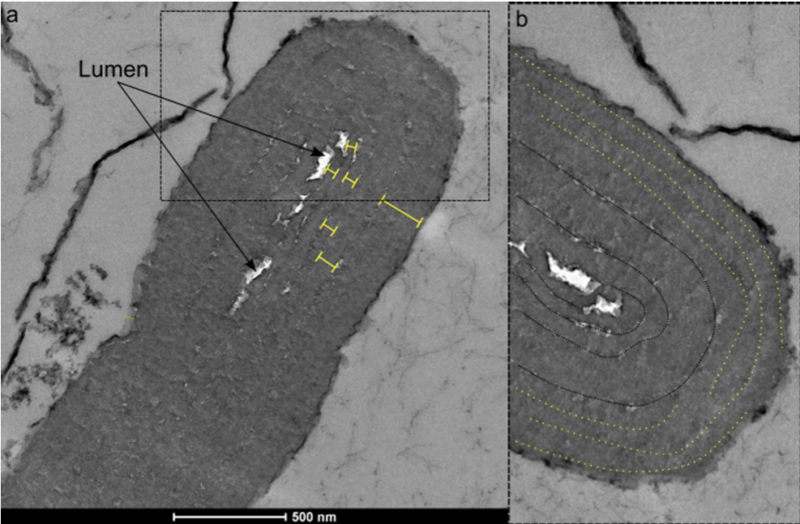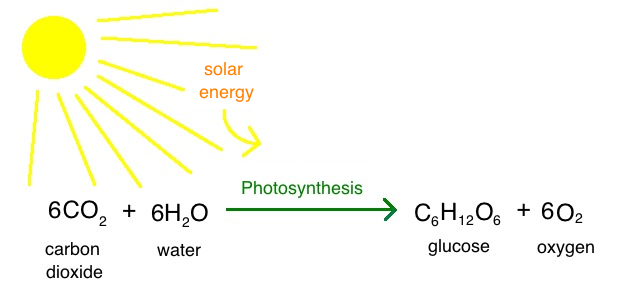
It's not an exaggeration to suggest that the most significant event on Earth was the evolution of photosynthesis. The ability to harvest energy from light freed life from the need to scavenge energy from its environment. With this new capability, life grew in complexity and invaded new environments, ultimately reshaping the Earth.
For such a pivotal event, we know remarkably little about it. Tracing the presence of oxygen in the atmosphere suggests photosynthesis evolved at least 2.4 billion years ago, although the rise in oxygen levels turns out to be impressively complicated. Tracing the variations of present-day genes places photosynthesis' origin at about 3 billion years ago. That timing is similar to the origin of the photosynthetic cyanobacteria, which both continue to live independently and have been incorporated into plant cells as chloroplasts.
What we don't have is clear evidence of photosynthetic cells of similar age. A few microfossils with similarities to cyanobacteria have been identified, but it's impossible to determine whether they were making the proteins that power photosynthesis. Now, new fossils described by a team at the University of Liège push unambiguous evidence of photosynthesis back over a billion years to 1.7 billion years ago.
What’s a thylakoid?
The work relies on the identification of structures called thylakoid membranes. These are stacks of disc-shaped membranes that increase the surface area within the cell that can play host to photosynthetic protein complexes. Not all present-day cyanobacteria have thylakoid membranes, but they're present in the chloroplasts of plant cells.
To search for thylakoids, the researchers obtained small cell-like bodies from sedimentary rocks in several sites. They made ultra-thin sections of these rocks and then performed electron microscopy to resolve some of the details in the interior of the cells. This allowed them to pick up features that were only a few tens of nanometers across.
Two of the sites had cells with multi-layered internal membranes that are typical of thylakoids. These were the McDermott Formation in Australia and the Grassy Bay Formation in Arctic Canada. The latter is over a billion years old, which is substantially older than any previous evidence of thylakoids. But the McDermott Formation is over 1.7 billion years old, which means the fossil evidence for these structures now goes back 1.2 billion years earlier than it had.
At the same time, apparent cyanobacteria fossils from the Democratic Republic of the Congo that are a billion years old do not have indications of thylakoid membranes. As noted, there are still species of cyanobacteria around today that lack these structures, so it appears these lineages have been separate for quite some time.
Going back in time
While important in its own right, the findings are mostly significant for their implications. Molecular data suggests that the split between the two groups of cyanobacteria—with and without thylakoids—goes back even earlier. There have also been some proposals that the evolution of thylakoid membranes gave photosynthesis the boost needed to set off the Great Oxygenation Event, where the atmosphere's oxygen levels rose significantly for the first time.
By showing it was possible to identify thylakoid membranes despite the immense age, the researchers behind this work provide a strong impetus to check for their presence around the time of key evolutionary events. The fossil evidence might ultimately catch up with the genetic and chemical evidence when it comes to the evolution of photosynthesis.
Nature, 2024. DOI: 10.1038/s41586-023-06896-7 (About DOIs).



3175x175(CURRENT).thumb.jpg.b05acc060982b36f5891ba728e6d953c.jpg)
Recommended Comments
There are no comments to display.
Join the conversation
You can post now and register later. If you have an account, sign in now to post with your account.
Note: Your post will require moderator approval before it will be visible.